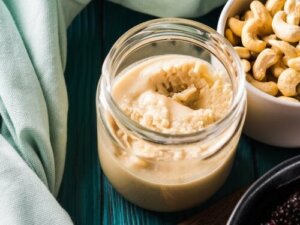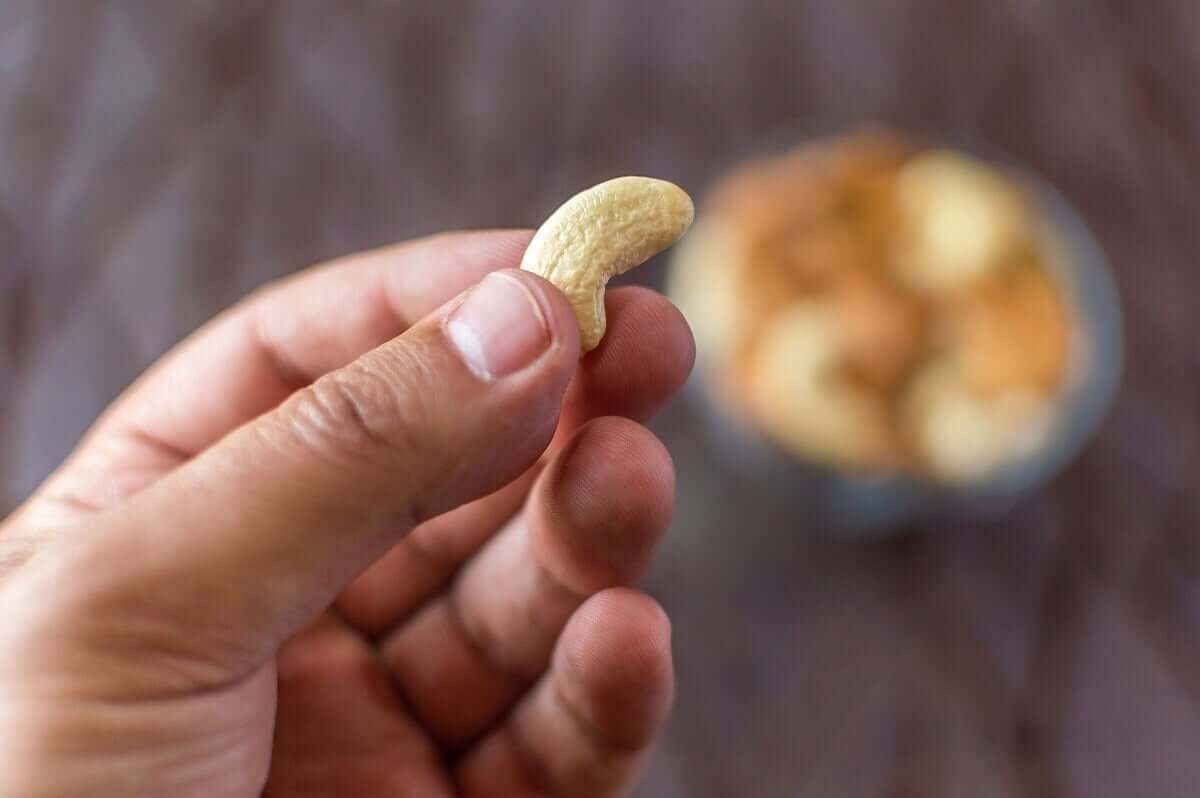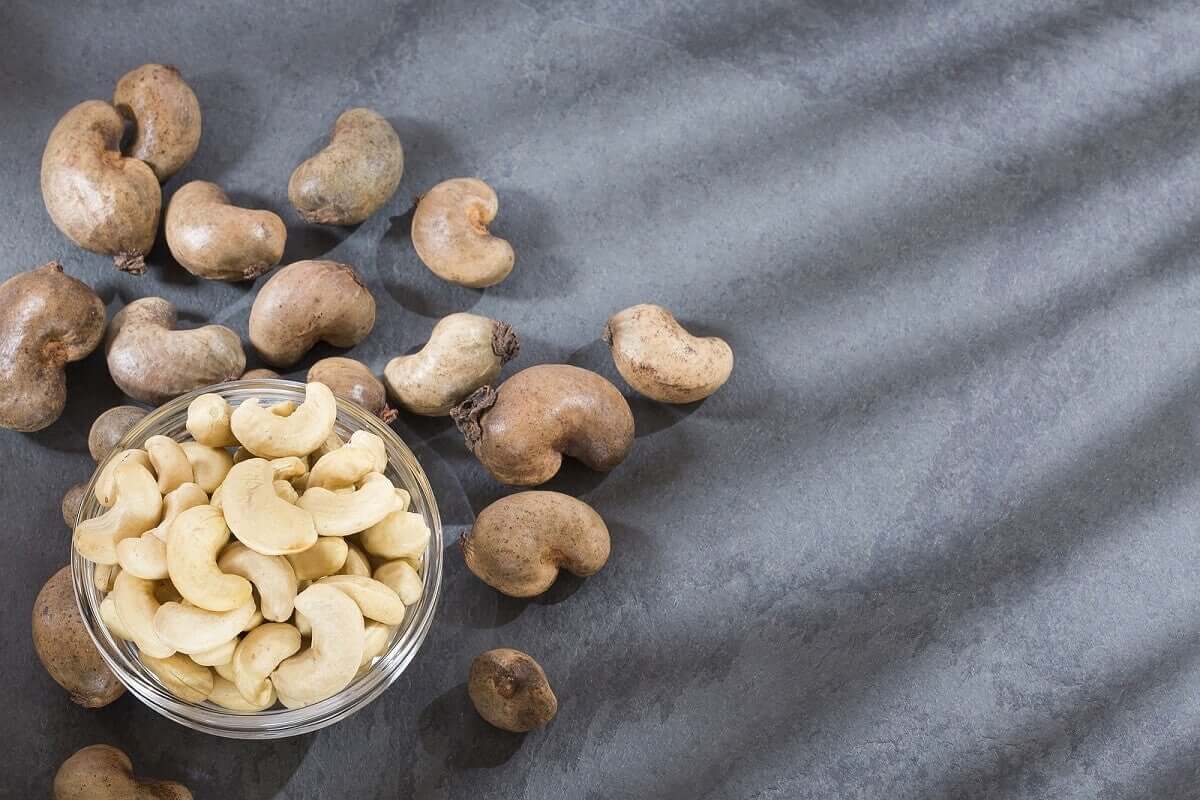Cashew Cream: Properties, Preparation and Uses


Written and verified by the nutritionist Florencia Villafañe
Cashew nuts, like other varieties of nuts, are ideal for eating on their own or as part of different recipes. Moreover, when used in spreads, they usually preserve their nutritional properties. So, with that in mind, have you tried cashew cream?
In general, cashews are known for their delicious flavor and for being a complement to improve the quality of your diet. In the following paragraphs, we’ll tell you more about the properties, preparation, and uses of cashew cream.
What are vegan creams?
Vegan creams are products that can provide a great number of health benefits. In particular, people use nuts such as almonds, hazelnuts, walnuts, pistachios, and cashews to make them. All of these nuts stand out for their nutrient content, among which are the healthy omega 3, 6, and 9 fats.
Likewise, they’re a source of dietary fiber, antioxidants, potassium, magnesium, and other phytochemical compounds that, once you assimilate them, favor the functions of the body. Since many nutrients are concentrated in the skin, it’s best to eat nuts raw rather than toasted.

Read also: 6 Varieties of Nuts that Boost Your Energy
Cashew cream: What properties and benefits does it have?
Cashew cream is a soft and creamy paste. While people often use it to prepare sweet recipes, it’s also useful as a sauce or spread for salty dishes. In fact, you can even use it to prepare vegan cheeses.
However, the scientific article entitled “Nuts: Allies for your meals” highlights several benefits of this food. Here are some of them:
Helps to take care of cardiovascular health
Because of its healthy fiber and fatty acid content, it helps lower blood cholesterol and triglyceride levels. In turn, it helps reduce the risk of heart diseases, such as arrhythmias or the formation of atheromatous plaques. Its consumption is even associated with the optimal functioning of the brain.
Improves intestinal health
Cashews contain dietary fiber that contributes to better functioning of the gastrointestinal tract. Thus, its regular consumption favors the prevention of disorders such as constipation and the formation of diverticula.
Promotes healthy skin and hair
The copper, zinc, and B-complex vitamins that cashews provide help with skin and hair care. The reason? They’re essential for the nervous system and contribute to the production of collagen, a key component for skin and hair health.
See also: The Properties of Hazelnut Milk
How to prepare a cashew cream
To prepare a cashew nut cream, you need to use the nut in its natural state. That is, when you buy them, you must make sure that they haven’t been toasted or fried. Likewise, you must have a food processor or a high power blender on hand.
Instructions
- The first thing you need to do is put the cashew nuts in the food processor or blender and then grind them for 2 or 3 minutes. You’ll notice that a paste begins to form.
- Then, with the help of a spatula, stir it to speed the process along. Make sure the machine is off while you are doing this.
- Next, turn the processor back on for another 3 minutes.
- Repeat this process as many times as necessary to obtain the cream.
- You’ll know it’s ready when the paste is smooth, manageable, and spreadable.
This is the typical cashew cream. However, you can add water to make the consistency more liquid. You can also add stevia, sugar, cocoa, pepper, salt, or aromatic herbs.

Uses of cashew cream
The most interesting thing about cashew cream is that you can use it in several dishes. Its flavor goes very well with other foods, so it’s ideal for breakfast or snacks. So, how can you use it?
Toast spread
As we mentioned, one of its most common uses is as a spread to replace butter or cheese. You can use it in its sweet version, for example with cocoa, stevia, and cinnamon. Or you can make it salty, with pepper, garlic, and parsley.
Cake filling or frosting
To use it as a filling for sweet cakes, it’s best to skip out on adding water and just use it in its thick form. This way, you only have to make the cake base to taste, fill it with this cream, and decorate it with strawberries, peaches, or nuts.
Ice cream
For this recipe, you’ll need to process a frozen banana and mix it with 2 tablespoons of this paste. You can also sweeten it and add grated coconut, chocolate chips, or frozen fruits. It’s a useful idea for making different flavors of vegan ice cream.
Vegan cheese
To make a vegan cheese with cashew cream you need to add salt, seasonings to taste, and cook it over low heat with a spoonful of cornstarch or thickener. This way, you’ll achieve greater consistency.
Cashew cream for your favorite dishes
As you can see, cashew cream is a product with many uses in the kitchen. Not only can you use it to spread on bread and crackers, but also to make ice cream, desserts, and other delicious recipes.
Best of all, its moderate consumption contributes to improving the quality of the food. Due to its nutrient content, it’s ideal for taking care of your health.
So, are you ready to give it a try?
All cited sources were thoroughly reviewed by our team to ensure their quality, reliability, currency, and validity. The bibliography of this article was considered reliable and of academic or scientific accuracy.
- Lima, J. R., Garruti, D. S., & Bruno, L. M. (2012). Physicochemical, microbiological and sensory characteristics of cashew nut butter made from different kernel grades-quality. LWT-Food Science and Technology, 45(2), 180-185.
- FRUTOS SECOS: Aliados para tus comidas. Ficha 54. Secretaría de agroindustria Disponible en: http://www.alimentosargentinos.gob.ar/HomeAlimentos/Nutricion/fichaspdf/Ficha_54_Frutos_Secos.pdf
- Bermúdez-Márquez, M. A. (2020). Evaluación de dos aditivos antioxidantes naturales en la elaboración de mantequilla de semilla de marañón (Anacardium occidentale L.) y su efecto sobre la rancidez oxidativa y calidad sensorial. Vicerrector Académico, 2522, 15.
- Meritxell, N., Ruperto, M., & Sánchez-Muniz¹, F. J. (2004). Frutos secos y riesgo cardio y cerebrovascular. Una perspectiva española. Archivos Latinoamericanos de Nutrición, 54(2), 137-148.
- FRUTOS SECOS. Disponible en: http://badali.umh.es/assets/documentos/pdf/artic/frutos-secos.pdf
This text is provided for informational purposes only and does not replace consultation with a professional. If in doubt, consult your specialist.








